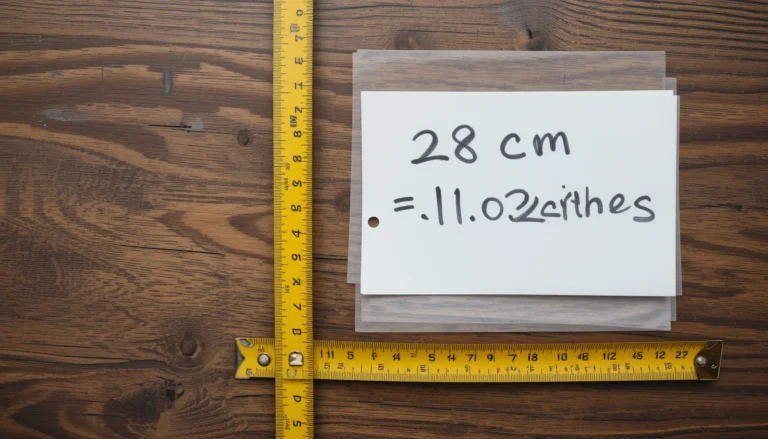A football field is a rectangular surface precisely marked to create a standardized playing area that ensures consistency in the sport. The field’s dimensions—including its length, width, and zones—form the backbone of organizing games and executing strategies. At its core, the field spans 120 yards in length, incorporating two end zones for scoring. Yard lines and markers spread out across the surface assist players and coaches in measuring distances and tracking progress.
This carefully marked playing space serves as a reference point for both teams, enabling them to strategize and control game flow. Every element, from the goal line to the playing area’s markers, helps players and coaches execute game tactics while maintaining the field’s role as a foundation for measuring efforts and achieving goals. With every detail standardized, the field ensures that scoring occurs consistently and fairly across games.
Why Are Football Field Dimensions Important?
The dimensions of a football field are crucial for maintaining the integrity and functionality of the game. By adhering to standardized dimensions, the field ensures fair play and creates equal conditions for both teams during competitions. This uniformity minimizes the risk of one side gaining an unfair advantage, allowing players and coaches to focus on strategic gameplay, including play calling, formations, and movements.
Precise measurements, such as the yard lines and the field’s length, assist referees in enforcing official rules, marking progress, and applying penalties without confusion. An adequate room is also provided for tackles and other physical activities, reducing the chance of injuries and ensuring safety considerations are met. Properly laid-out dimensions give players clear guidance for advancing and scoring while helping coaches develop strategies that align with the game’s flow and rules enforcement. This consistency is key to smooth matches and effective positioning during play.
The Evolution of Football Field Dimensions
Changing Standards Over Time
The dimensions of a football field have significantly evolved, with varying layouts reflecting the game’s growth. Early sports versions had informal field sizes, often improvised based on local resources. This lack of standardization meant field dimensions could vary greatly, leading to irregularity in gameplay. The need for consistency in field measurements became apparent as football gained popularity. Today, the National Football League (NFL) and the National Collegiate Athletic Association (NCAA) govern field dimensions, establishing benchmarks to ensure fair competition and player safety.
From Local Variability to Formal Rules
As the game progressed, governing bodies like the NFL and NCAA enforced strict field design protocols. The 120-yard field, with a 100-yard playing surface and two 10-yard end zones, became the gold standard for professional and collegiate play. The width of the field, typically 53 1/3 yards, was standardized to maintain fairness across all game levels. These measurements also allowed for consistent player placements, which improved the game’s quality. Over time, field markings, including yard markers and goal lines, were refined to improve visibility for both players and referees, contributing to better game flow and reducing the risk of injuries.
General Dimensions of a Football Field

Official Size for Professional Games
Professional football, particularly the NFL, has precise measurements to create a standardized, fair, and competitive play environment. The official dimensions are as follows:
- Length: The total length of an NFL field is 120 yards. This includes the 100-yard playing field and two 10-yard end zones (one at each end).
- Width: The field’s width is 53 1/3 yards, roughly 160 feet across. This width is consistent for all NFL games and provides enough space for offensive and defensive plays to develop.
- Total Area: With these dimensions, the total area of an NFL field is about 57,600 square feet.
These measurements are consistent across all NFL stadiums, ensuring that every game is played under the same conditions. This standardization is crucial for the players’ preparation and the integrity of the game.
Variations in Football Field Sizes Across Leagues
While the NFL has set the standard, other football leagues and levels of play can have slight variations in field dimensions:
- College Football Fields: NCAA fields are very similar to NFL fields in size, but one key difference is the placement of hash marks (the lines used to spot the ball after each play). In college football, hash marks are placed wider apart, allowing teams to execute plays from outside field areas. However, the field’s length and width are identical to the NFL.
- High School Football Fields: High school fields often differ slightly, primarily due to space constraints or safety considerations. The standard length remains the same (120 yards), but the width is sometimes reduced to around 50-53 yards, slightly narrower than the professional and collegiate standards. Additionally, goalposts may be closer together to fit the field better in the available space.
These differences ensure that fields can be adjusted for different levels of play, from professional to amateur, while maintaining the spirit of the game.
Standard Measurements of Football Field: Yard Lines and Zones
Yard lines are a critical aspect of football field dimensions, providing markers to help players and referees navigate the field:
- Yard Lines: The field is marked with yard lines placed every 5 yards, running across the field from sideline to sideline. These lines help players, coaches, and referees measure the distance needed to advance the ball and provide reference points for penalties and progress.
- Key Zones: Key zones include:
- Midfield Line: The 50-yard line divides the field into two halves as a reference point for kickoffs and strategic play calling.
- End Zones: The end zones at each end of the field are 10 yards deep, marking the area where players score touchdowns.
- Goal Lines: The goal lines are located at the beginning of each end zone and mark the boundary between the playing field and the scoring area. These lines are critical for determining when a touchdown has been scored.
Together, these measurements help create a clear and consistent playing environment for players and officials, ensuring the game progresses smoothly and fairly.
Types of Football Fields and Their Specific Dimensions
In professional football, the field dimensions are standardized to ensure consistency and fairness across all NFL games. The total length of an NFL field is 120 yards, including the 100-yard playing field and two 10-yard end zones. The width measures 53 1/3 yards, providing a uniform space for teams and players to operate within. Goalposts are positioned 18 feet, 6 inches from the end zones, standing 10 feet high. These specific measurements are adhered to in every NFL stadium, ensuring that all games are played under the same conditions and promoting fair play.
However, there are notable differences between NFL fields and those in other leagues, such as college and high school football. College and high school fields often feature narrower goalposts and hash marks that are spaced closer together. The goalpost width in these leagues is typically narrower than the NFL’s, which can affect play strategies, including angles for kicks. The closer hash marks in college football also influence offensive and defensive strategies, as the tighter spacing alters how teams approach their plays and positioning.
If you enjoy exploring dimensions or are a fan of dimensions, begin reading our detailed blog post about the world dimension explorer.
Explore Now >> How large is Earth in Kilometers and Miles?
Field Components and Their Dimensions
The sidelines on a football field are the outermost boundaries, running the entire 120-yard length of the playing area. These critical lines define the field’s limits and play a vital role in gameplay. When a player steps out of bounds, the play is immediately ruled dead, halting progression and ensuring a clear and enforceable boundary. This consistency helps referees and players maintain fair gameplay across all levels of the sport.
Beyond the sidelines lies the out-of-bounds area, an integral part of the field layout designed with player safety in mind. This buffer zone provides space to reduce the risk of collisions with barriers, benches, or spectators during fast-paced, high-speed action. In professional settings, these safety margins are sufficient to allow players to decelerate after intense plays, ensuring a safer environment without disrupting the flow of the game.
Special Rules Affecting Dimensions
In football games, particularly during overtime, certain modifications to field dimensions and starting positions are implemented to speed up the game and increase the chances of a scoring play. In both NFL and NCAA overtime formats, teams begin at the 50-yard line rather than at their usual starting positions, reducing the field area and positioning teams closer to the end zones. This change aims to create more scoring opportunities and to heighten the drama of overtime situations.
Overtime field adjustments also affect kicks, particularly field goal attempts. Kickers face different hash marks, which can alter the angles of their kicks, adding a layer of challenge to scoring attempts. Environmental factors, such as wind, can further impact the trajectory of kicks, making the final moments of a tied game even more high-stakes. These modifications to the field’s layout and dimensions ensure that the game remains fair and consistent while adding excitement to the conclusion of a dramatic, tied game.
Conclusion
Football field dimensions are crucial for ensuring fair play and effective strategies in the game. Standardized measurements create a consistent framework across leagues, including the NFL, college, and high school football, allowing teams to compete on equal terms. With uniform layouts and predictable field conditions, players, coaches, and fans can better understand and appreciate the game structure. This consistency provides a valuable foundation for strategizing and enhances the enjoyment of the sport at a deeper level, ensuring that every game is played under the same conditions.
Frequently Asked Questions (FAQs)
How Wide Is a Football Field in Yards?
A standard football field is 53 1/3 yards wide, which is consistent across professional and most collegiate levels.
Are College and NFL Fields the Same Size?
While the overall dimensions of college and NFL fields are similar, the spacing of hash marks differs. In the NFL, hash marks are closer together, while college fields have wider spacing, which affects gameplay strategies.
Why Are End Zones 10 Yards Deep?
End zones are 10 yards deep to provide sufficient space for offensive plays, such as running touchdowns or passing plays, as well as to ensure player safety by giving extra room for scoring actions.
What Are the Dimensions of a Canadian Football Field?
A Canadian football field is 110 yards long and 65 yards wide, with 20-yard-deep end zones, which are significantly larger than the standard American football field dimensions, contributing to a different style of play.
How Do Weather Conditions Affect Field Dimensions?
While the dimensions of a football field are fixed, weather conditions—especially on natural grass fields—can affect playability. Rain, snow, or extreme heat can make the field slippery or muddy, potentially influencing how the game is played but not altering the field’s actual size.










